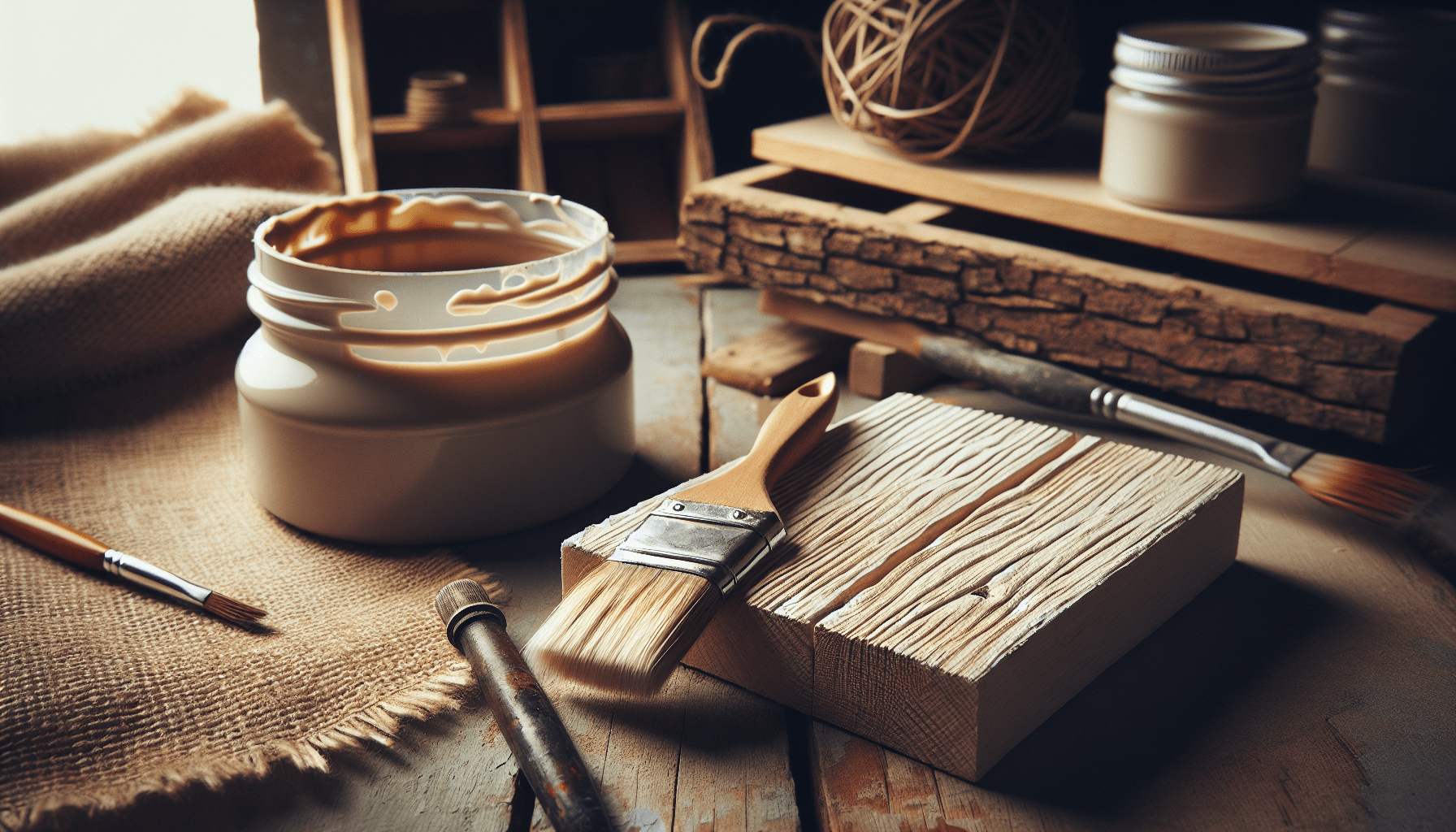So you’ve got a rusty metal surface that you’re itching to breathe new life into? You may find yourself asking, “Can I paint metal with acrylic paint?” Well, good news! The answer is a resounding yes. Acrylic paint is a versatile medium that can adhere beautifully to metal surfaces, offering endless possibilities for adding color and creativity to your metal projects. In this article, we’ll explore the ins and outs of painting metal with acrylic paint, discussing essential preparation steps, the best techniques to achieve a lasting finish, and some handy tips to ensure your artistic endeavor is a success. Get ready to transform your metal creations into vibrant works of art!
Preparation
Before you start painting metal with acrylic paint, it is essential to prepare the surface properly. This will ensure that the paint adheres well and provides a smooth and durable finish.
Clean the surface
The first step in preparing your metal surface for painting is to clean it thoroughly. Remove any dirt, grease, or grime using a mild detergent or degreaser. Rinse the surface with clean water and allow it to dry completely before moving on to the next step.
Remove rust and corrosion
If the metal surface you are working on has any rust or corrosion, it is important to remove it before painting. Use a wire brush or sandpaper to scrub away the rust, making sure to get into all the nooks and crannies. You can also use a rust converter or primer specifically designed for rusty surfaces to treat the affected areas. Once the rust has been removed, clean the surface again to remove any residue.
Sand the metal
Sanding the metal surface creates a rough texture that helps the paint adhere better. Use a medium-grit sandpaper or sanding block to lightly sand the entire surface. This will help remove any remaining rust, smooth out any rough spots, and provide a stable base for the paint.
Apply a primer
After sanding the metal, it is crucial to apply a primer before painting. A primer serves as a bonding agent between the metal surface and the paint, ensuring better adhesion and a longer-lasting finish. Choose a primer specifically designed for metal surfaces and apply it according to the manufacturer’s instructions. Allow the primer to dry completely before moving on to the next step.
Choosing the Right Type of Acrylic Paint
When it comes to choosing the right type of acrylic paint for your metal project, there are several factors to consider. The type of paint you select will determine the durability, color options, and overall performance of your finished product.
Acrylic paint options
There are various types of acrylic paints available in the market, including student-grade, artist-grade, and professional-grade paints. Student-grade paints are more affordable and suitable for beginners or casual painters. Artist-grade paints offer higher-quality pigments and better color saturation, while professional-grade paints are the top-of-the-line choice for professional artists and highly detailed work.
Considerations for metal
When selecting acrylic paint specifically for metal surfaces, it is important to choose a paint that offers good adhesion to metal. Look for paints labeled as “metallic” or “metal-ready,” as these are designed to adhere well to metal surfaces. Additionally, consider the finish you want to achieve – matte, satin, or glossy – and select a paint accordingly.
High-performance acrylic paints
For the best results on metal, consider using high-performance acrylic paints. These paints are specifically formulated to provide excellent adhesion, durability, and resistance to weathering and corrosion. They are ideal for outdoor projects or surfaces that will be exposed to harsh conditions.

Application Techniques
Acrylic paint can be applied to metal in various ways, depending on the desired finish and the tools available. Here are some commonly used application techniques:
Brush application
Using a brush is the most common and versatile method of applying acrylic paint to metal. Choose a brush suitable for the size and intricacy of your project, and apply the paint in thin, even strokes. Start from one end of the surface and work your way across, ensuring complete coverage.
Spray application
Spray application is ideal for larger metal surfaces or projects that require a smooth, even finish. Using an airbrush or a spray can, apply the paint in light, overlapping passes. This method allows for quick and efficient coverage, but it may require more skill and practice to achieve desired results.
Roller application
If you are painting a large, flat metal surface, such as a wall or furniture piece, using a roller can be an effective method. Use a foam or short-nap roller for smooth surfaces, or a textured roller for added design or texture. Apply the paint in a crisscross pattern to ensure even coverage.
Dipping method
The dipping method involves immersing the metal object into a container of diluted acrylic paint and slowly pulling it out to achieve an even coating. This method works well for small metal objects or items with intricate shapes, as it allows for complete coverage without brush strokes or spray patterns.
Tips for Painting Metal with Acrylic Paint
Painting metal with acrylic paint can be a rewarding and enjoyable experience. To ensure the best results, here are some helpful tips to keep in mind:
Use thin layers
When applying acrylic paint to metal, it is better to use thin layers rather than thick coats. Thin layers dry more evenly and are less likely to crack or peel over time. If you need to achieve a darker or more vibrant color, apply multiple thin layers, allowing each layer to dry completely before adding the next.
Allow for proper drying time
Acrylic paint dries relatively quickly, but it is important to allow each layer to dry completely before moving on to the next. This will prevent smudging or mixing of colors and ensure a smooth and even finish. Follow the manufacturer’s instructions for the recommended drying time.
Protect the painted surface
Once you have finished painting your metal surface, it is essential to protect it from scratches, dents, or other damage. Avoid placing sharp objects directly on the painted surface, and use felt or rubber pads to prevent metal-to-metal contact. If the painted surface will be exposed to frequent use or harsh conditions, consider applying a protective topcoat or sealer.
Consider a protective topcoat
To add an extra layer of protection and enhance the durability of your painted metal surface, consider applying a protective topcoat. There are various clear acrylic sealers available in the market that can provide additional protection against UV rays, moisture, and general wear and tear. Follow the manufacturer’s instructions for application and drying times.

Common Mistakes to Avoid
While painting metal with acrylic paint, there are several common mistakes that should be avoided to ensure a successful outcome:
Not preparing the surface adequately
One of the most common mistakes people make when painting metal is not preparing the surface properly. Failing to clean, remove rust, or apply a primer can result in poor adhesion, uneven finish, and decreased durability of the paint.
Using acrylic paint with poor adhesion
Some acrylic paints do not adhere well to metal surfaces, leading to premature peeling or flaking. Avoid using inexpensive or low-quality acrylic paints, as they may not provide the necessary adhesion required for a long-lasting finish. Instead, choose paints specifically formulated for metal or high-performance acrylic paints.
Applying thick coats
Applying thick coats of acrylic paint on metal can cause the paint to crack or peel. It is better to apply multiple thin layers, allowing each layer to dry completely before adding the next. This will ensure proper adhesion and a smooth and durable finish.
Skipping the primer
Priming the metal surface before painting is essential for a long-lasting finish. Primer provides better adhesion, increases durability, and helps prevent rust or corrosion. Skipping this step can result in poor paint adhesion and a less durable finish.
Benefits of Painting Metal with Acrylic Paint
Painting metal with acrylic paint offers several advantages over other paint types. Here are some benefits to consider:
Wide range of color options
Acrylic paints come in a vast array of colors and finishes, allowing you to choose the perfect shade and style for your metal project. Whether you prefer a bold and vibrant look or a more subtle and matte finish, there are countless options to suit your creative vision.
Fast drying time
Acrylic paint dries relatively quickly, allowing you to complete your project in less time. This is particularly beneficial for larger surfaces or projects that require multiple coats. The fast drying time also reduces the risk of smudging or accidental damage during the painting process.
Versatile and easy to use
Acrylic paint is known for its versatility and ease of use. It can be applied to metal surfaces of various shapes and sizes, and its water-based formula makes cleanup quick and hassle-free. Whether you are a beginner or an experienced painter, acrylic paints offer a user-friendly experience.
Good adhesion to metal surfaces
When applied correctly, acrylic paint adheres well to metal surfaces, ensuring a long-lasting and durable finish. With proper surface preparation, including cleaning, rust removal, and priming, acrylic paint forms a strong bond that can withstand regular wear and tear.

Considerations for Different Metals
Different types of metal may require specific considerations when it comes to painting with acrylic paint. Here are some tips for painting common metals:
Aluminum
When painting aluminum with acrylic paint, it is important to clean the surface thoroughly to remove any dirt or oxidation. Use an aluminum primer to ensure proper adhesion, and choose paints specifically formulated for use on aluminum. Consider using a clear coat or sealer to protect the painted surface from oxidation and weathering.
Steel
Steel surfaces should be cleaned and degreased before painting. Applying a rust-inhibiting primer is crucial to prevent corrosion and promote paint adhesion. Paints labeled as “metal-ready” or “rust-resistant” are ideal for painting steel. Consider using a clear coat or sealer for added protection against rust and environmental damage.
Galvanized metal
Galvanized metal surfaces have a thin layer of zinc coating, which can affect paint adhesion. It is important to clean the surface thoroughly and remove any oils or residues before painting. Use a primer specifically formulated for galvanized metal, and choose acrylic paints with good adhesion to metal surfaces. Applying a clear coat or sealer can enhance the durability and longevity of the paint.
Copper and brass
When painting copper or brass, it is important to clean the surface and remove any tarnish or oxidation. Apply a self-etching primer to ensure good adhesion, and choose paints suitable for use on metal surfaces. Copper and brass can develop a patina over time, so consider applying a clear coat or sealer to protect the painted surface and maintain its appearance.
Safety Precautions
When painting metal with acrylic paint, it is important to prioritize safety. Here are some essential safety precautions to follow:
Work in a well-ventilated area
Acrylic paints emit fumes, so it is important to work in a well-ventilated area to avoid inhaling potentially harmful substances. Open windows, use exhaust fans, or work outdoors whenever possible. If working indoors, consider using a respirator mask or wearing a protective apron to minimize exposure.
Protective gear
Wear appropriate protective gear, such as gloves, safety goggles, and a dust mask, to protect yourself from potential hazards. Acrylic paint can be messy, so it is essential to wear clothing that you don’t mind getting paint on.
Avoid ingestion and skin contact
Acrylic paint is generally non-toxic when dry, but it is still advisable to avoid ingestion or excessive skin contact. Wash your hands thoroughly after handling paint, and avoid eating, drinking, or smoking during the painting process.
Proper disposal of paint waste
Dispose of paint waste and leftover containers responsibly. Follow local regulations for proper disposal of paint and packaging materials to minimize environmental impact. Avoid pouring excess paint down the drain or disposing of it in the trash, as it can contaminate water sources or harm wildlife.

Durability and Longevity
The durability and longevity of your painted metal surface depend on various factors. Understanding these factors and taking appropriate measures will help ensure that your paint job stands the test of time.
Factors affecting durability
Several factors can affect the durability of acrylic paint on metal, such as exposure to sunlight, moisture, temperature fluctuations, and regular usage. While acrylic paint is known for its durability, prolonged exposure to harsh outdoor conditions or frequent abrasion can lead to fading, chipping, or peeling.
Protective measures for longevity
To enhance the longevity of your painted metal surface, consider applying a clear coat or sealer after the paint has dried. This additional layer of protection can help prevent fading, staining, and general wear and tear. Regular cleaning and maintenance, such as removing dirt or debris, can also extend the life of your painted metal.
Regular maintenance and touch-ups
Inspect your painted metal surface periodically for signs of damage or wear. If you notice any chips, scratches, or areas of paint loss, touch them up promptly to prevent further deterioration. Use the same type of acrylic paint and application technique for seamless blending.
Recoating as necessary
Over time, the painted metal surface may show signs of wear or damage that cannot be easily repaired. In such cases, consider recoating the entire surface with fresh acrylic paint. Proper surface preparation and application techniques will ensure a smooth and durable finish.
Alternative Options for Metal Painting
While acrylic paint is a popular choice for painting metal, there are alternative options that may suit specific needs or preferences. Here are a few alternatives to consider:
Using specialty paints
If you are looking for a specific finish or effect, specialty paints may be a suitable alternative. For example, metallic paints can create a shiny or reflective surface, while texture paints can add depth and dimension to your metal project. Explore the wide range of specialty paints available in the market and choose the one that best fits your desired outcome.
Powder coating
Powder coating is a durable and long-lasting alternative to traditional painting methods. It involves applying a dry powder to the metal surface and then curing it with heat to create a hard, protective coating. Powder coating offers excellent adhesion, resistance to chipping and scratching, and a wide range of color options. However, it requires specialized equipment and is usually done by professionals.
Enameling
Enameling is a technique that involves fusing powdered glass onto a metal surface through a high-temperature firing process. This creates a glossy and durable finish that is resistant to fading, chipping, and staining. Enameling can be done with both transparent and opaque colors, allowing for a wide range of design possibilities. However, enameling requires specialized equipment and expertise.
Metal-specific spray paints
If you prefer the convenience and ease of spray painting, consider using metal-specific spray paints. These paints are formulated to adhere well to metal surfaces and provide a durable and long-lasting finish. Metal-specific spray paints are available in a variety of colors and finishes, allowing you to achieve the desired look with minimal effort.
In conclusion, painting metal with acrylic paint is a versatile and rewarding project that can transform the appearance of your metal surfaces. By following the proper preparation techniques and choosing the right type of paint, you can achieve a durable and professional-looking finish. Remember to take safety precautions, consider the specific requirements of different metals, and explore alternative options for painting metal. With the right tools, techniques, and a touch of creativity, you can create stunning and long-lasting painted metal surfaces.




